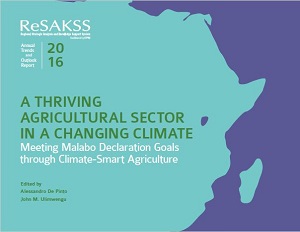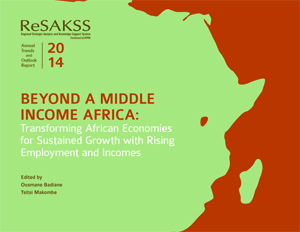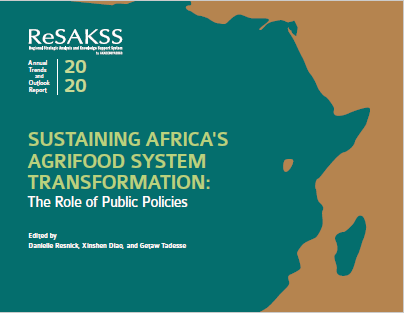Agricultural Growth Trends and Outlook for Lesotho
AUTHOR
Charles Nhemachena, Greenwell Matchaya and Sibusiso Nhlengethwa
SERIES NAME
ReSAKSS Annual Trends and Outlook Report
YEAR
2017
ABSTRACT
Progress with implementation of CAADP in Lesotho: Despite Lesotho signing the CAADP Compact in 2013, finalization of the National Agriculture Investment Plan (NAIP) is still in
progress, while subsequent processes (technical review and business meeting) are yet to be conducted. A SAKSS node to facilitate monitoring and evaluation, and provide a platform
for agricultural policy dialogue has not yet been developed.Environmental challenges affecting the agriculture sector: The main environmental challenges affecting the agriculture sector in Lesotho include erosion, land and environmental degradation, and low soil fertility. Environmental degradation has been worsened by agricultural activities on steep slopes and marginal lands, overgrazing of rangelands, and increased frequency of natural disasters (droughts and floods). These also contribute to declining performance of the agriculture sector in Lesotho. Agricultural activities in Lesotho: Agricultural crop production activities in Lesotho are mainly under smallholder rainfed systems, which are characterized by very limited input
use and heavy reliance on maize production. In addition, farmers also engage in livestock production. The main types are sheep, goats and cattle. Livestock herds can be in excess of
300 per household. Agriculture sector performance: Key CAADP targets and indicators analyzed include share of agricultural expenditure in total national budget and agricultural GDP growth. The findings indicate that Lesotho has not performed well in terms of meeting agriculture sector spending targets of the CAADP. The share of the agriculture sector has always
been below 2.5% since 2007-2008. The agriculture sector contributes about 8% to national GDP per year. Assessment of the agriculture sector GDP annual growth rate shows mixed
findings, with some years recording high growth rates and others recording high negative growth rates. Socioeconomic context, poverty, social inclusion and equity: Between 70 and 80% of Lesotho’s population resides in the rural areas and more than 75% of these people depend on agriculture as their main source of livelihood. Poverty and inequality are critical
challenges in the country, despite increases in per capita income and Lesotho being a middle-income country.
PUBLISHER
ReSAKSS


